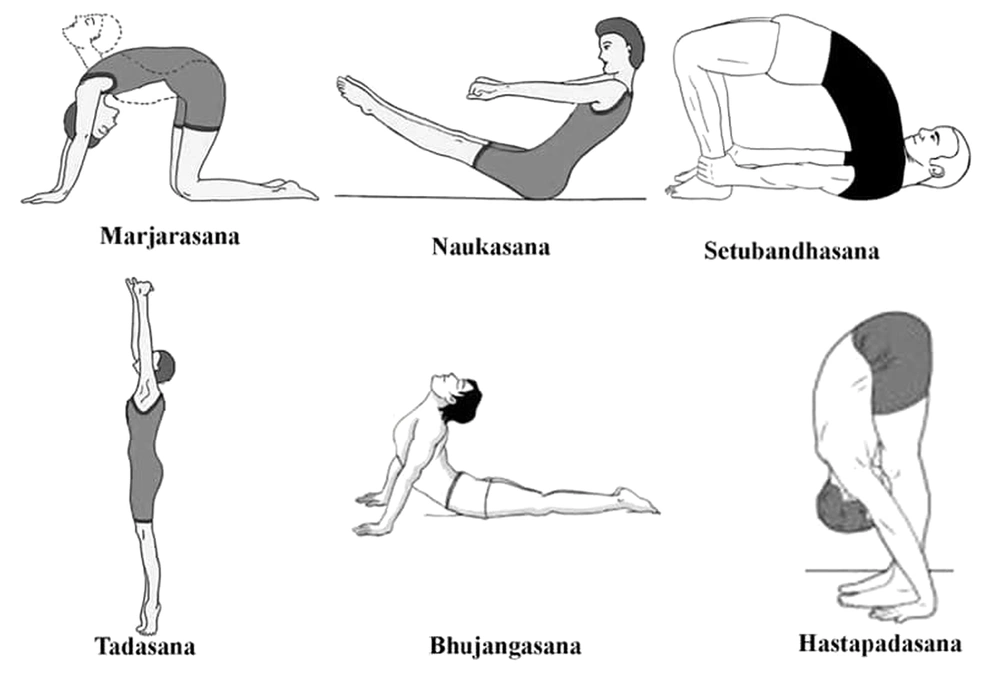1. Background
The life of a hair transplant (HT) surgeon in today’s demanding and commercial world is physically and mentally exhausting. Yoga and meditation serve as a retreat from their chaotic and busy lives. The HT practice is a skill and practice-oriented field where a surgeon needs to deliver results persistently with the same perfection. Long-standing tedious hours of surgery can increase an HT surgeon’s mental and physical suffering. Therefore, it is crucial for HT surgeons to maintain a perfect balance between the body, mind, and soul.
Ergonomics is a scientific discipline concerned with designing types of equipment and techniques for achieving maximum efficiency and safety to optimize human well-being and overall system performance in the work area (1). The HT surgeons often adopt uncomfortable asymmetric stooped postures while performing various steps of HT surgeries. Yoga can prove to be a simple ergonomic tool for HT surgeons and help them deliver improved work efficacy while maintaining its psycho-physical benefits for the body.
2. Problem
Improper postures while operating might lead to chronic orthopedic and neuronal issues in HT surgeons, as mentioned in the subsequent section. These physical problems might be temporary but rarely can bring about permanent work disability.
2.1. Upper Limb Problems
• Operating in a standing position with an unsupported arm for too long or raising the elbow too high can lead to rotator cuff injury.
• The micromotor used during hair transplant produces substantial vibration. If used for a long period of time recurrently, there might be a vibrational injury to the nerves leading to damage to the myelin sheath. This may lead to Raynaud’s disease, carpel tunnel syndrome, tennis elbow, and other disorders of nerves and microvasculature, such as compartment syndrome and peripheral neuropathies.
2.2. Back Problems
• Inappropriate forward or lateral bending and stooped posture while extraction or implantation might lead to loss of normal vertebral curvature and can cause kyphoscoliosis, degenerative lumbar spinal injuries, intervertebral disc prolapse, nerve compression, and entrapment syndromes (2).
• Constant forward or lateral bending of the neck can cause degenerative cervical spinal injury or brachial plexus injury.
2.3. Lower Limb Problems
• Long-standing hours of surgery, whether in a sitting posture or standing position, can lead to varicose veins and sciatica in the lower segment of the body.
3. Solution
Although there is no quick fix to these problems, applying ergonomics, diet, and yoga exercises can help. Yoga is the science of right living and is intended to be incorporated into daily life. It works on all aspects of the individual’s health, including physical, mental, emotional, psychic, and spiritual health.
A few minutes from a busy surgeon’s timetable invested in the below-enlisted asanas can make a big difference in his/her quality of life. These asanas not only improve flexibility but also enhance concentration and help maintain composure in difficult times. They take care of the neck and back muscles and maintain the correct body posture.
3.1. Marjariasana
Marjariasana is a movement that combines forward bends with back arches giving the back the complete movement it needs (Figure 1). Vertebrae become mobile, and movement in the cervical, thoracic, and lumbar spine releases all the tension trapped in it. The spine becomes flexible and healthy. It relieves backache and neckache resulting from overwork. It helps overcome lethargy and makes the mind fresh. It is good for those suffering from spondylitis, slipped disc, and chronic lower back pain (3).
Schematic diagram of various asanas for hair transplant surgeons (4).
3.2. Bhujangasana
Bhujangasana is a cobra pose (Figure 1). It opens up the shoulders and the neck and strengthens the entire back and shoulders. It improves the flexibility of the upper and middle back. It reduces fatigue and stress related to long hours of surgery. This asana helps tone the abdomen and strengthens the spine (3, 5).
3.3. Setubandhasana
This pose resembles a bridge (Figure 1). It strengthens the back muscles and relaxes tired and spastic back muscles instantly. It gives a good stretch to the chest, neck, and spine (3, 6).
3.4. Uttan Vakrasana
It is also called a twisted pose because the spine is twisted in this asana. It reduces backaches and rigidity in the spine. The spine attains elasticity, and the flat on the lateral side of the abdomen gets reduced (3, 6).
3.5. Tadasana
It is a palm tree pose (Figure 1). By practicing it, the individual gets rid of lethargy and feels fresh and energetic. This asana improves the functioning of the veins of the legs. It improves the flexibility of the spinal column and reduces the undesirable pressure on vertebrae. Balancing asana training has potential benefits to improve attention and concentration.
3.6. Naukasana
It is a boat pose where both hands and legs are raised while lying on the stomach (Figure 1). In this asana, the neck, back, and waist muscles are strengthened. The tone of the back and hip muscles are improved. It also improves the health and strength of the spinal column. Abdominal fat can be reduced by daily practice of this asana.
3.7. Hastapadasana
This hand-to-feet posture gives a stretch to the back muscles and vertebral column (Figure 1). Back muscles, hamstring muscles, and waist muscles become flexible. Lumbago, sciatica, and other painful conditions can be corrected by daily practice of this asana (6).
3.8. Practicing Meditation
Practicing meditation for 10 - 15 minutes a day reduces stress and mental fatigue and improves concentration ability.
4. Conclusions
With proper exercises, HT surgeons can increase their efficiency and productivity in the long run. A successful HT practice requires a positive, focused mind and a healthy body. Yoga and meditation are ancient Indian practices that can help a surgeon achieve these goals and maintain poise between mental, physical, and spiritual health. Yoga improves the range of motion and flexibility, strengthens weakened muscles, alleviates pain symptoms, and enhances function in general.

